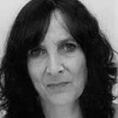One of my favourite poems is Haiku No 1, by the Manchester punk poet John Cooper Clarke, which goes:
To-con-vey one's mood
In sev-en-teen syll-able-s
Is ve-ry dif-fic . . .
JCC is probably the only person who could write a perfect haiku about how hard it is to write a haiku – and make it funny. As the self-styled specialist in oriental poetry explained at the BBC's 6 Music Festival in his native city, the haiku was pioneered in the 15th century, in Japan, by "a bloke called Basho". As he also says, there is no Japanese translation for "near enough".
Cooper Clarke is mistaken in citing the 15th century. Matsuo Basho lived between 1644 and 1694, and he didn't invent the haiku, which had existed since the 13th century, but he is still regarded as the greatest haiku master.
Today haiku poets, or haijin, write in nearly 70 languages around the world. Irish writers including Seamus Heaney, Michael Hartnett and Gabriel Rosenstock have had a go.
Haiku are generally simple, direct and intense encapsulations of experience. In general, in English, a haiku's 17 syllables are divided into three lines, of five, seven and five. JCC's haiku, although adhering to this rule, is lacking in one other traditional element: a kigo, or reference to nature or the seasons.
I once went with a friend on a ginko, a walk taken by a group of people in order to write haiku. It’s usually taken to celebrate nature at a special time of the season. I recall enjoying the walk immensely but being too self-conscious to read out my attempts at capturing the beauty of raindrops on a spider’s web. So, “dif-fic”, yes, but worth it.
Here’s another great haiku:
Amid red and green flashes
The moon enters
Dún Laoghaire Harbour
The red and green flashes refer to the lighthouses of the seaside town’s twin piers, and the three lines conjure up the harbour at night simply but effectively. It makes the moon seem like a goddess or a queen making a grand entrance, perhaps with fireworks.
It was written by Anatoly Kudryavitsky, founder of the Irish Haiku Society, who this year leads the first Mountains to Sea ginko, on September 14th, as part of the Poetry Now section of the literary festival. Meet at the East Pier – that’s the red flash – at 10am and bring a notebook and pen.
Mountains to Sea, September 11-14th; mountainstosea.ie












